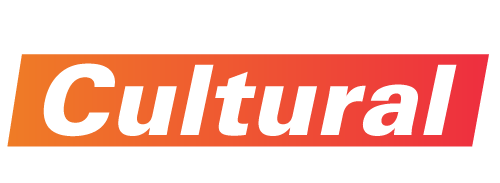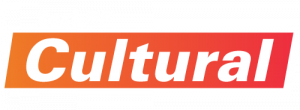Total cost refers to the total expense incurred in reaching a particular level of output; if such total cost is divided by the quantity produced, average or unit cost is obtained. Variable costs, like the costs of labour or raw materials, change with the level of output. In conclusion, having a highly skilled cost accounting team is essential for businesses to ensure their costs are correctly categorized and analyzed. This team can help track expenses and provide accurate data for management decisions so the business runs efficiently while minimizing waste. These expenses are sometimes referred to as direct costs because the company can control them directly. The opposite is fixed costs, expenses that the company cannot control, therefore, cannot be changed.
Cost accounting and management accounting are two important terms in accounting that are used to control and formulate the organization policies. Cost price is the total amount of money that it costs a manufacturer to produce a given product or provide a given service. Accountants use cost to refer specifically to business assets, and even more specifically to assets that are depreciated (called depreciable assets). The cost (sometimes called cost basis) of an asset includes every cost to buy, deliver, and set up the asset, and to train employees in its use. The term “cost” is often used in business in the context of marketing and pricing strategies. However, the electricity used to power the plant is considered an indirect cost because the electricity is used for all the products made in the plant.
Sunk Cost
Cost accounting also helps you determine how much it costs to produce a product, which is useful when deciding how much to charge. For a T-shirt manufacturer, an example of an indirect cost is the rent for the factory building, utilities, insurance, property taxes, and general office supplies. These costs are incurred in the production process but cannot be directly tied to the manufacturing of a specific T-shirt. All selling and administrative expenses are considered to be period costs. In variable costing, fixed factory overhead is also treated as a period cost. The cost increases or decreases in the same proportion in which the units produced are termed as a variable cost.
As we keep on charging depreciation, the unrealized gain keeps on decreasing and being realized. However, it’s limited to additional depreciation due to revaluation. A purchase order is a legally binding document issued by a buyer to a supplier, indicating the type, quantity, price, and delivery date of the goods the buy… A purchase Requisition is a type of form or document that is required to be filled when there is a request for an order or purchase by an employee. It’s crucial to address cost misclassifications quickly, as they can have financial and legal repercussions.
Direct Costs
By managing labor costs carefully, manufacturers can ensure that they remain competitive while still delivering high-quality products at affordable prices. In conclusion, misclassification of cost types can lead to inaccurate product costing and pricing, which could have a detrimental effect on the financial performance of a business. Cost accounting is a complex field that requires close attention to detail.
Remain faithful to what counts, no matter the cost, pope says – USCCB
Remain faithful to what counts, no matter the cost, pope says.
Posted: Mon, 26 Jun 2023 16:04:30 GMT [source]
The amount that a business charges customers per unit of the product or service it sells is called the price. The amount it takes for a company to produce the product or service it sells is called the cost. Opportunity cost refers to the missed opportunity difference between budget and forecast to pursue another option. For example, the opportunity cost of working instead of going to school is that you miss out on an education. The opportunity cost of quitting your job so you can go to school is the loss of income from working.
cost noun
It is an amount that is recorded as an expense in bookkeeping records. In accounting, costs are the monetary value of expenditures for supplies, services, labor, products, equipment and other items purchased for use by a business or other accounting entity. It is the amount denoted on invoices as the price and recorded in book keeping records as an expense or asset cost basis.
What is cost and fees?
Lawyers usually charge their clients for their services (fees) and expenses that they have paid on the client's behalf (disbursements). Disbursements may include court fees. Together these charges (lawyers' fees and disbursements) are known as costs.
If a producer were to sell his products at the production price, his costs and income would break even, meaning that he would not lose money on the sales. (b) Indirect Labor All labor involved in producing a product that is not considered direct labor is classed as indirect labor. For example, the work of a plant supervisor in a manufacturing concern would be considered indirect labor.
Variable cost
Variable costs are expenses that increase or decrease based on the level of production or sales. Examples of variable costs include raw materials, packaging, and labor. Variable costs are directly tied to the production of a specific product, and are often the focus of cost-cutting measures. Variable costs can have an impact on a company’s pricing strategy by affecting its profit margins.
- For example, expenses may not change if the output is up to 50% capacity but may increase by 5% for every 20% increase in output over 50% but up to 70%.
- Accounts Payable are a liability incurred when companies purchase goods or services on credit from a vendor or supplier but haven’t yet paid for them.
- In conclusion, having a highly skilled cost accounting team is essential for businesses to ensure their costs are correctly categorized and analyzed.
- The bearers of such costs can be either particular individuals or society at large.
- Cost accounting also helps you determine how much it costs to produce a product, which is useful when deciding how much to charge.
- It also includes how much the company spent bringing the product to the market.
Underestimating the costs of a business may result in a cost overrun once operations begin. This means that costs are higher than the income, and consequently, the company will lose money. When a new company’s business plan is developed, organisers will often create cost estimates. These are used to assess whether the benefits and revenues of a proposed business will more than cover the costs. From a buyer’s point of view the cost of a product is also known as the price.
How does having a highly skilled cost accounting team help ensure your costs are categorized & analyzed correctly?
Examples of indirect costs include utilities, marketing expenses, and office supplies. They can have a significant impact on a company’s pricing strategy because they represent a portion of the overall expenses that must be covered in order to remain in business. The example of indirect costs is Oil and scrap materials, [indirect materials], the salary of factory supervisors [indirect labor], rent rates and depreciation [indirect expenses].
If a period cost is expected to generate an economic benefit beyond one year, then it can be capitalized, or recorded as an asset on the company’s balance sheet. Assets on the balance sheet can be written off with depreciation over a few years, rather than being expensed all in one year. Examples would be purchases of company vehicles and expensive electronic equipment. Period costs can be significant and can be further subdivided into selling costs and administrative costs. Costs don’t directly affect taxes, but the cost of an asset is used to determine the depreciation expense for each year, which is a deductible business expense. Depreciation is considered a “non-cash expense” because no one writes a check for depreciation, but the business can use it to reduce income for tax purposes.
What is a cost example?
The cost can easily be traced to a product, department, or project. For example, Ford Motor Company (F) manufactures cars and trucks. A plant worker spends eight hours building a car. The direct costs associated with the car are the wages paid to the worker and the cost of the parts used to build the car.


